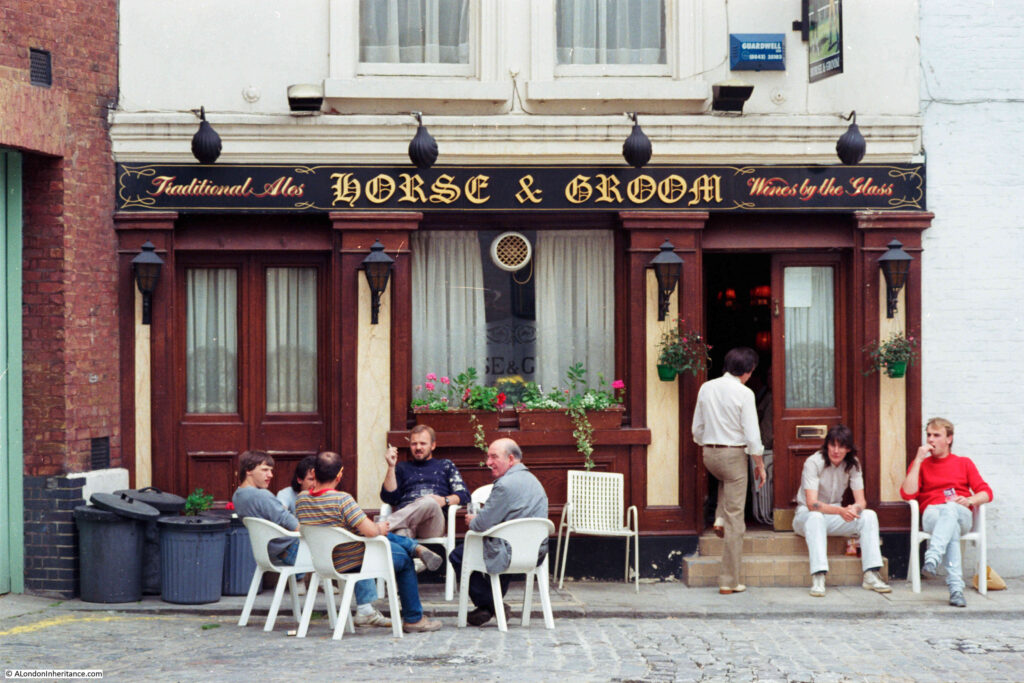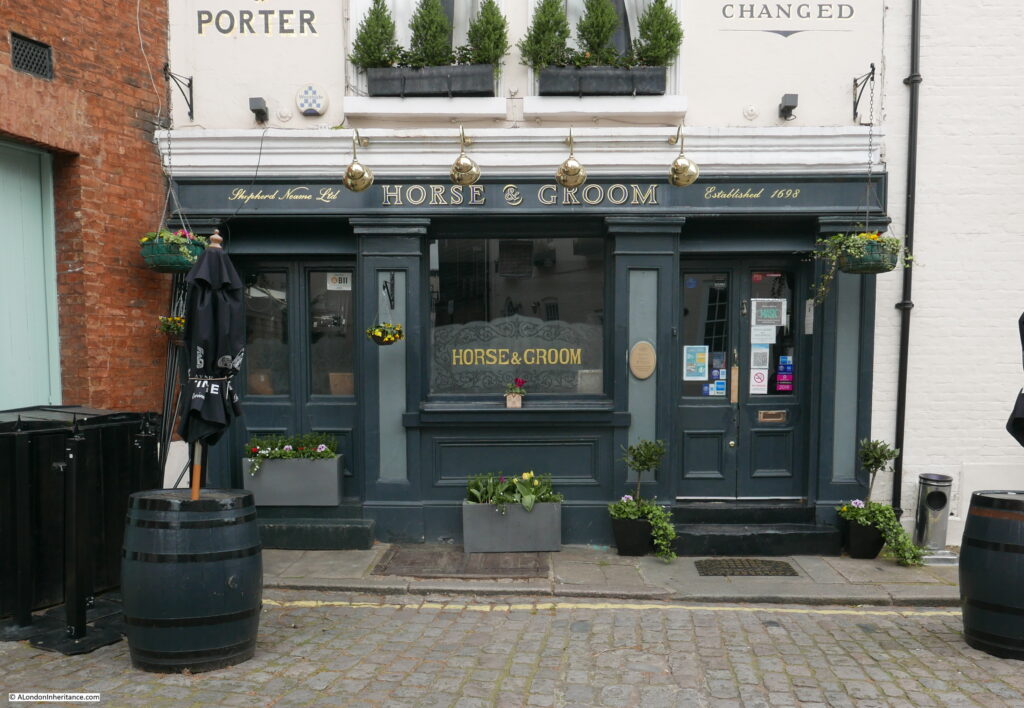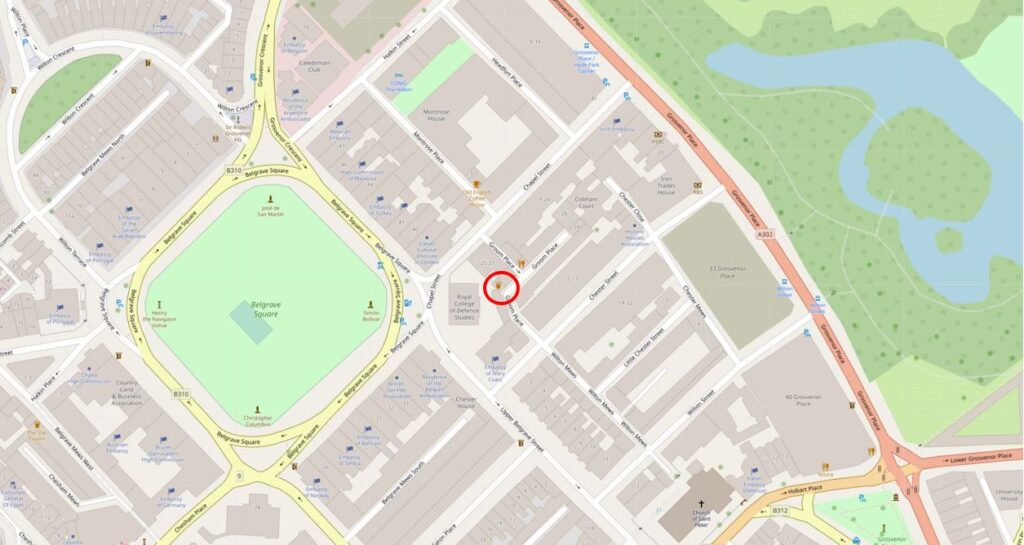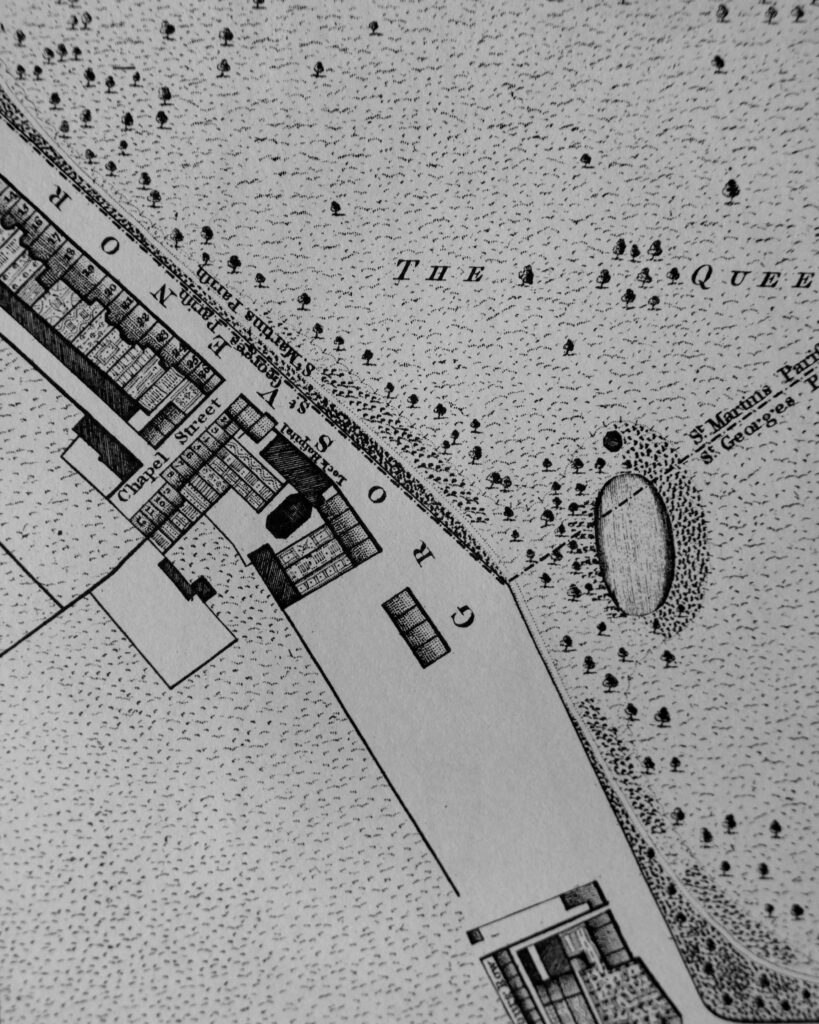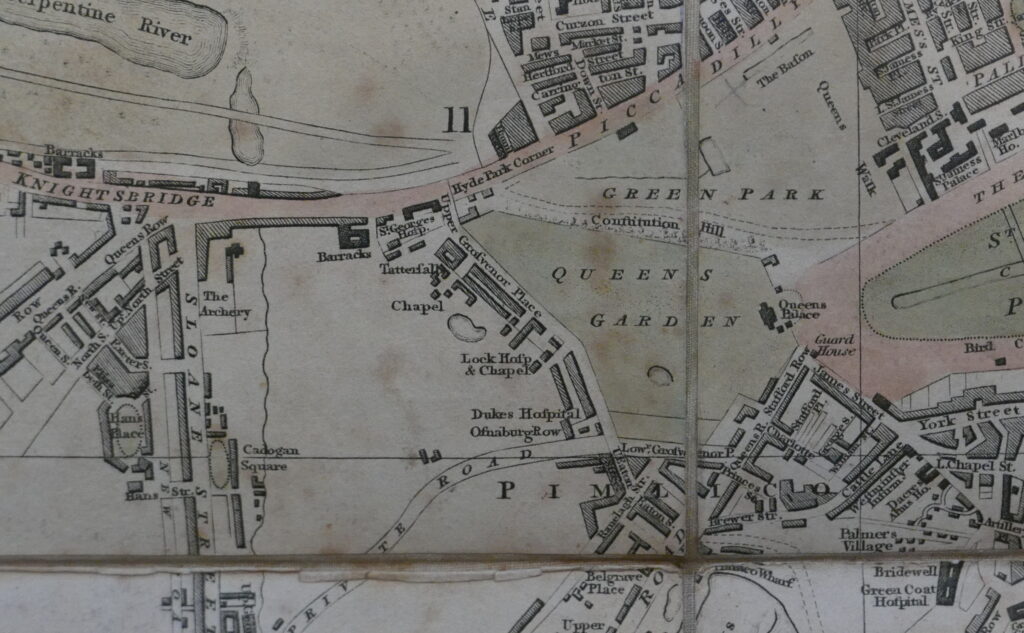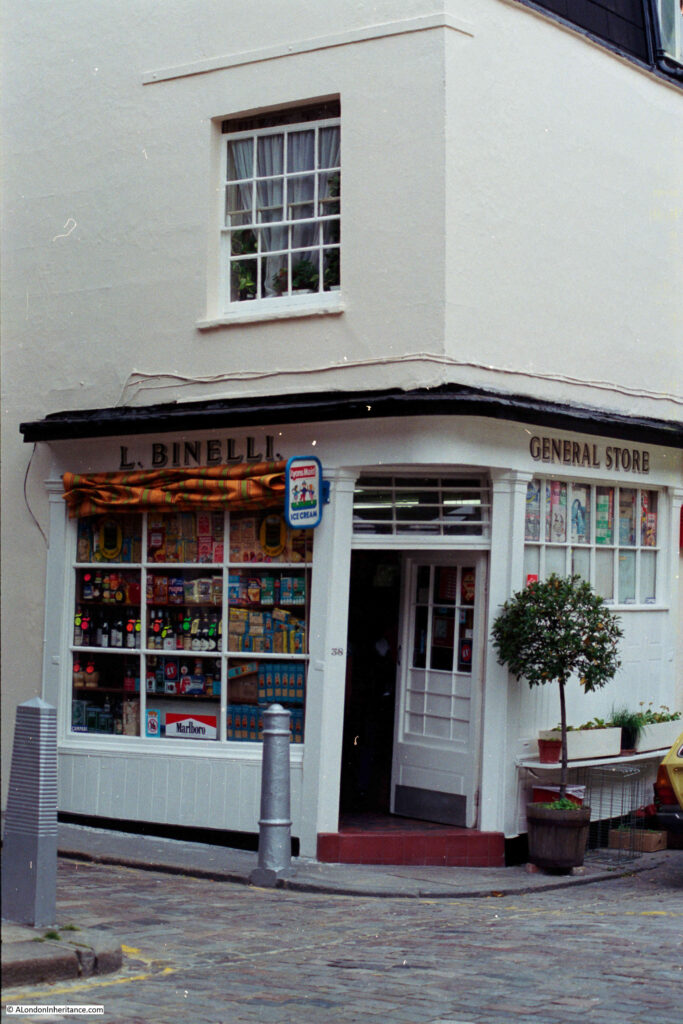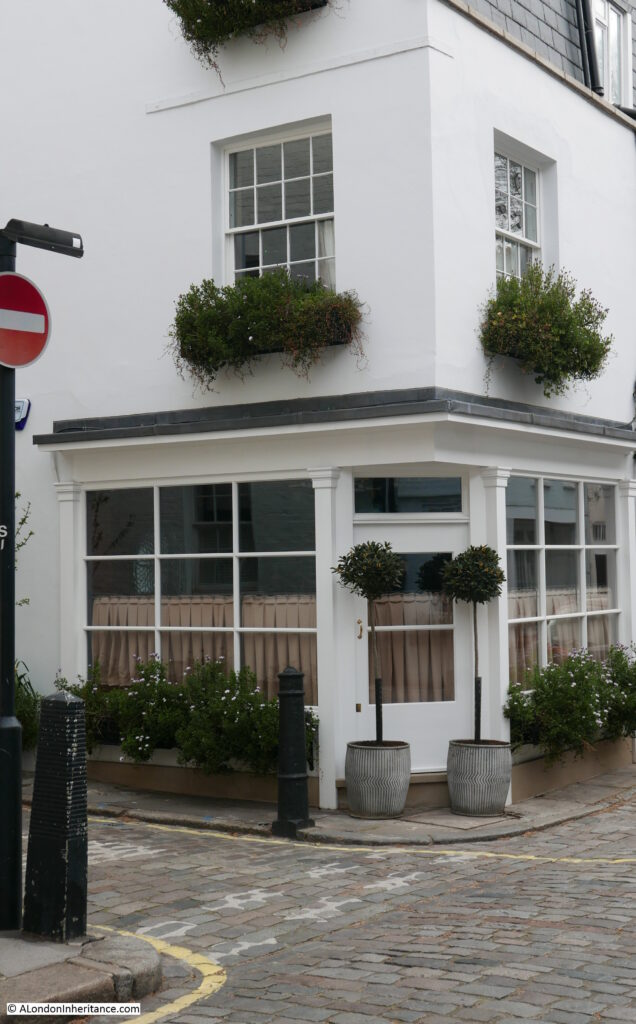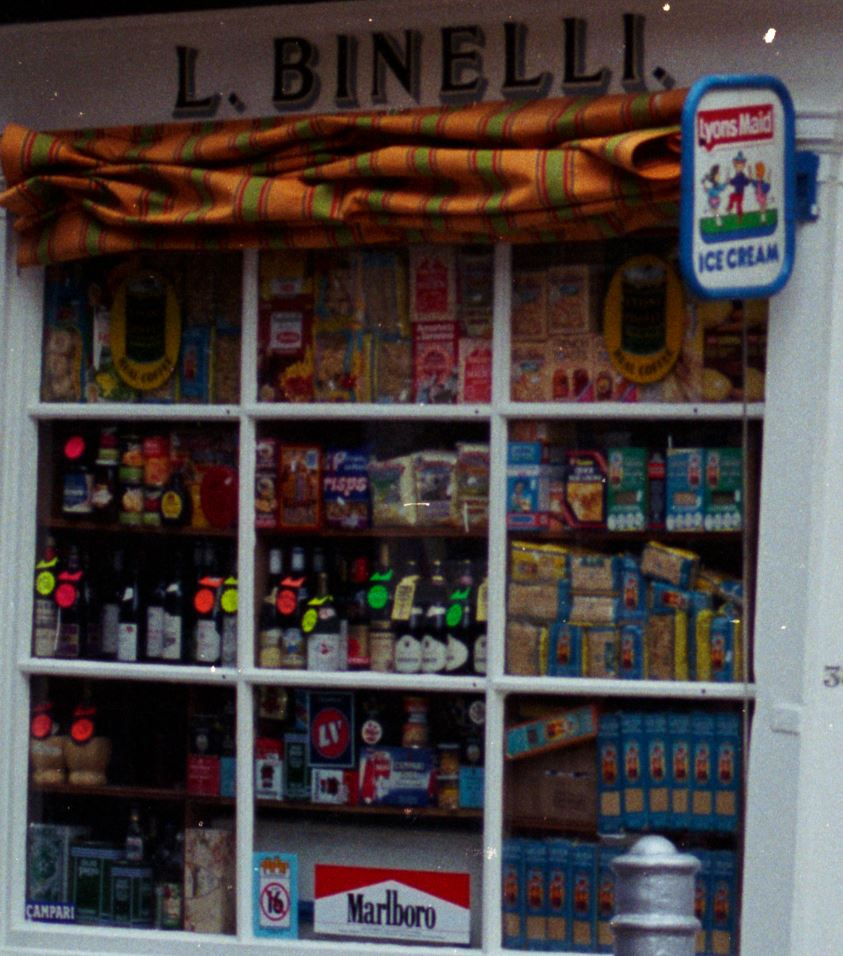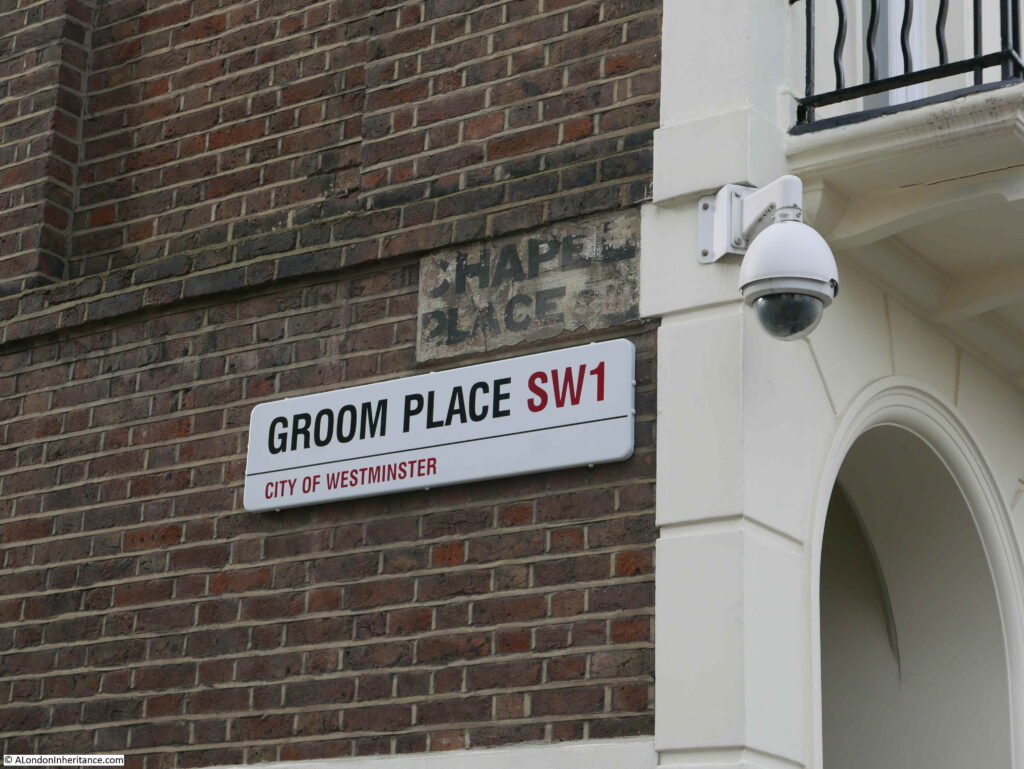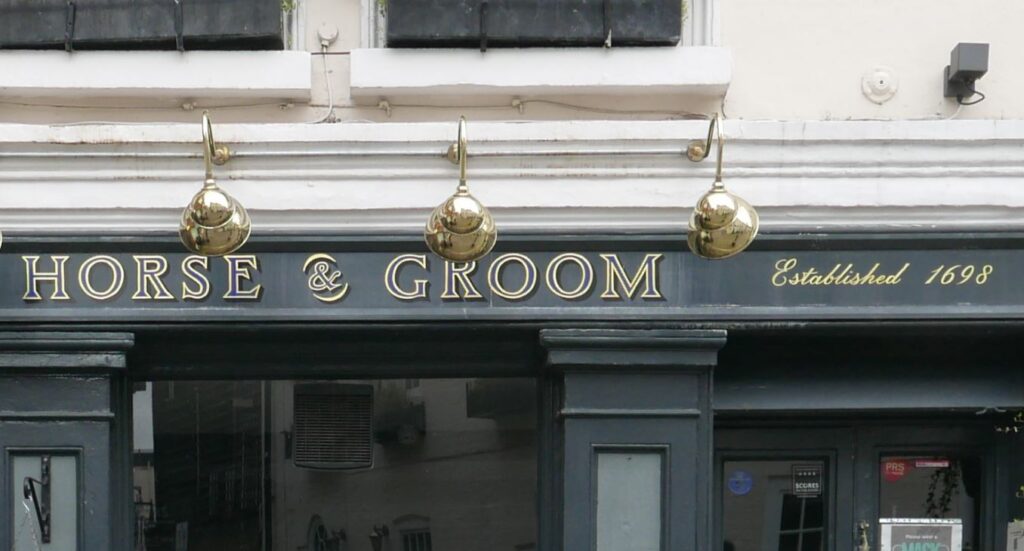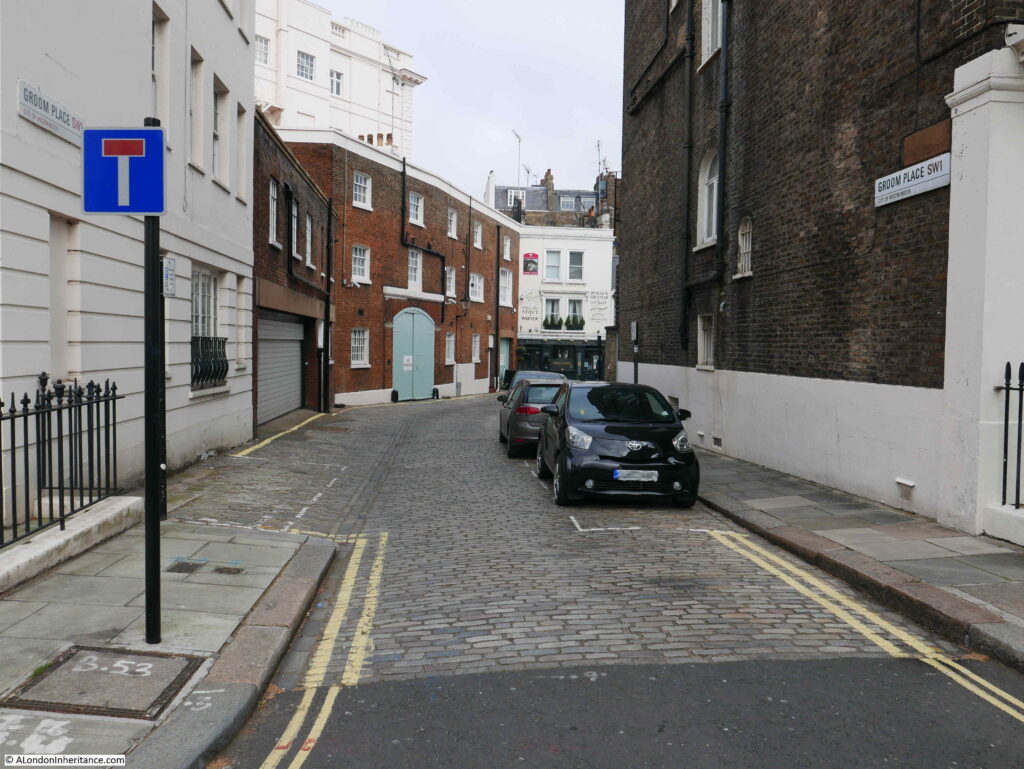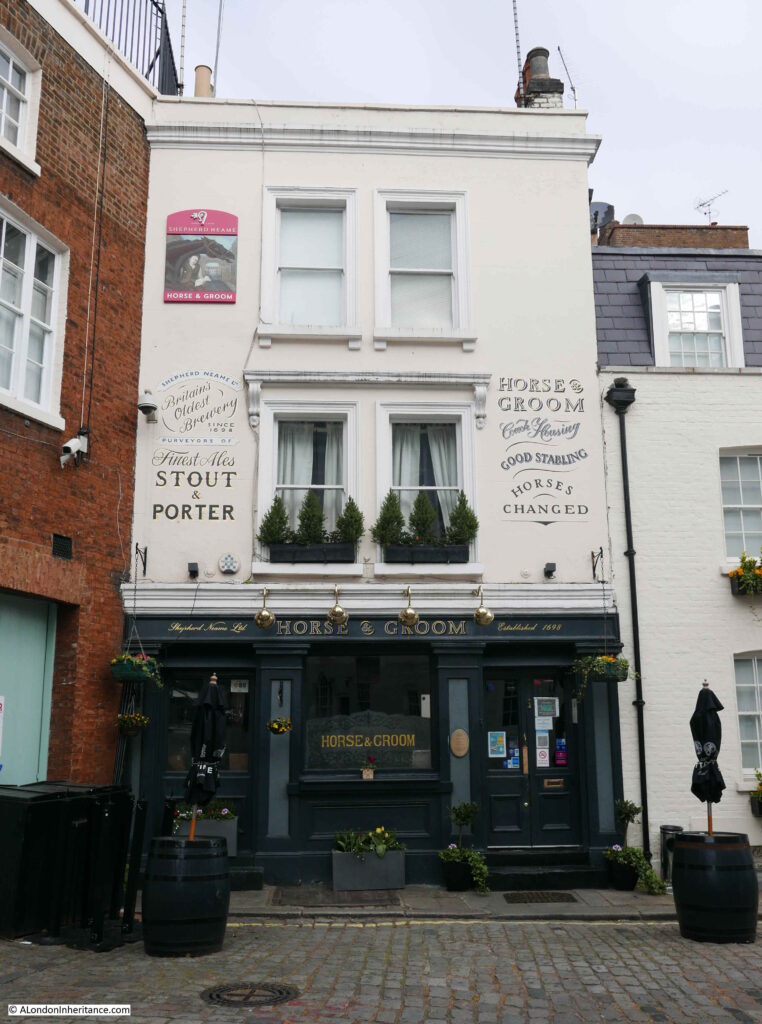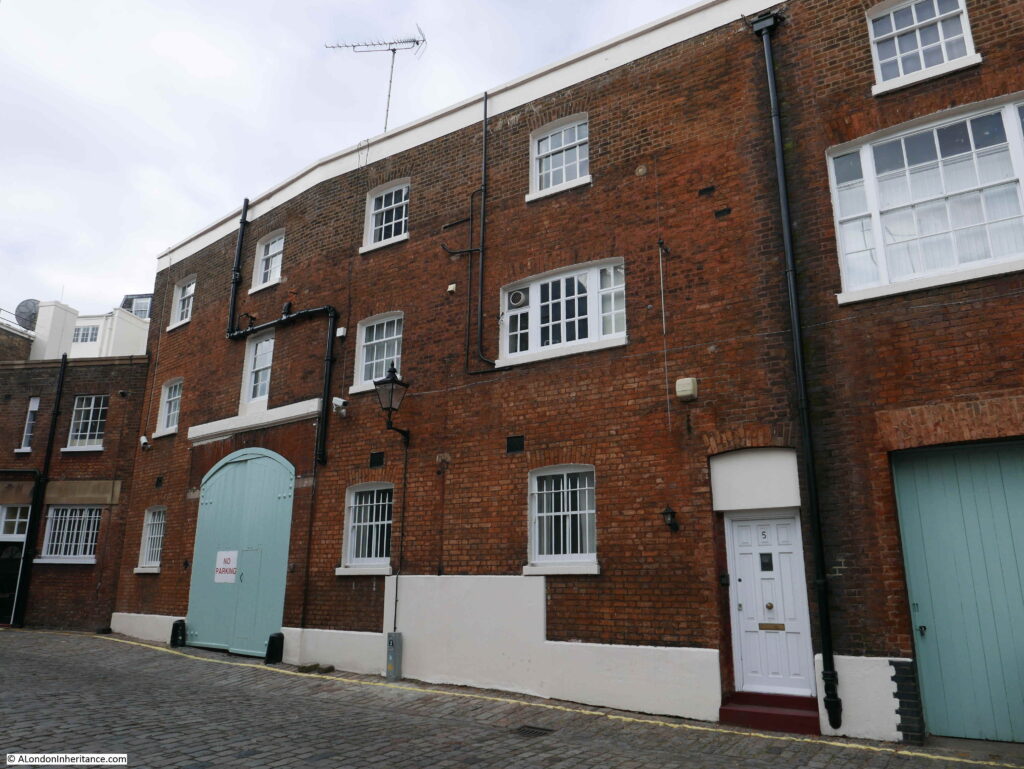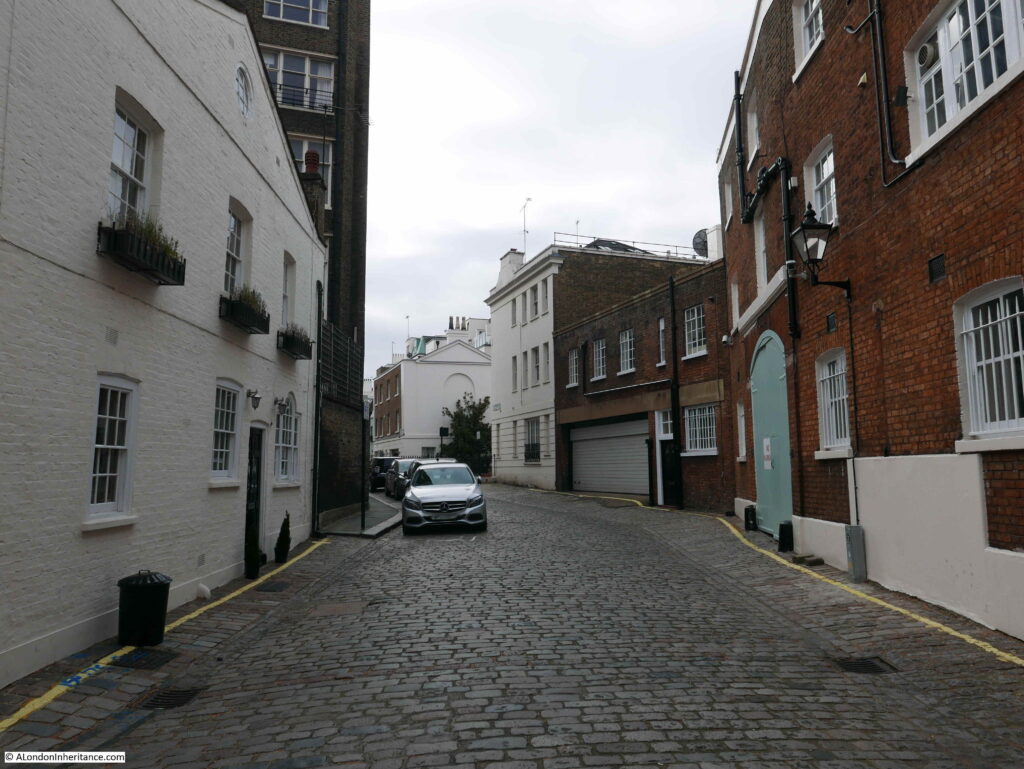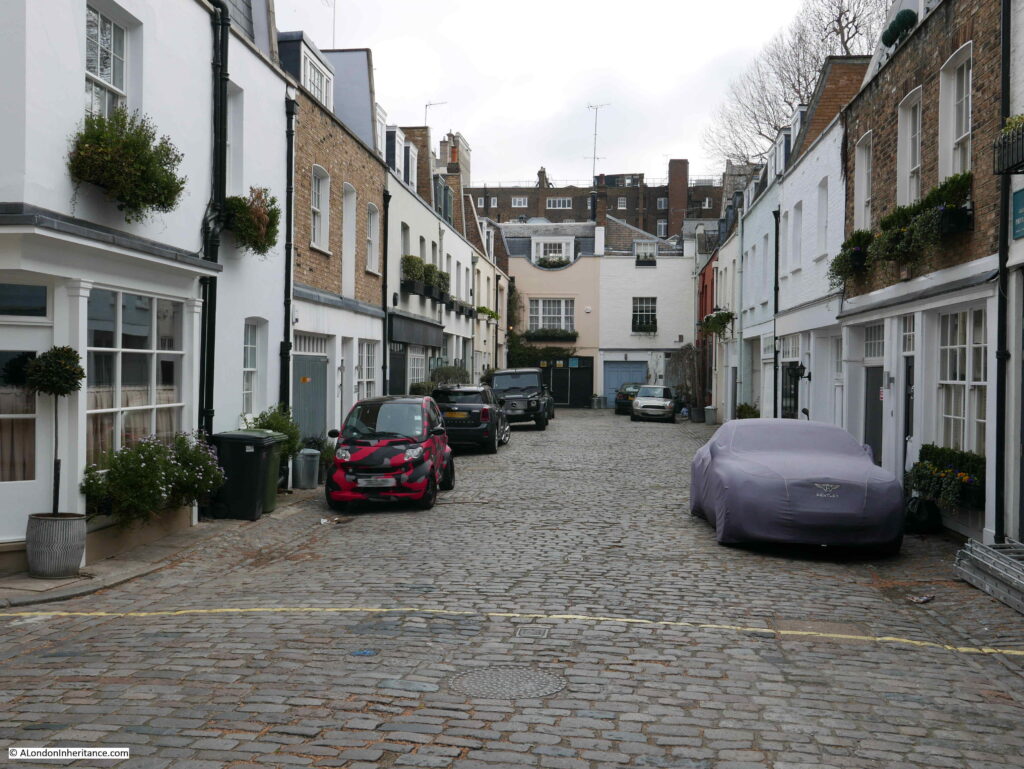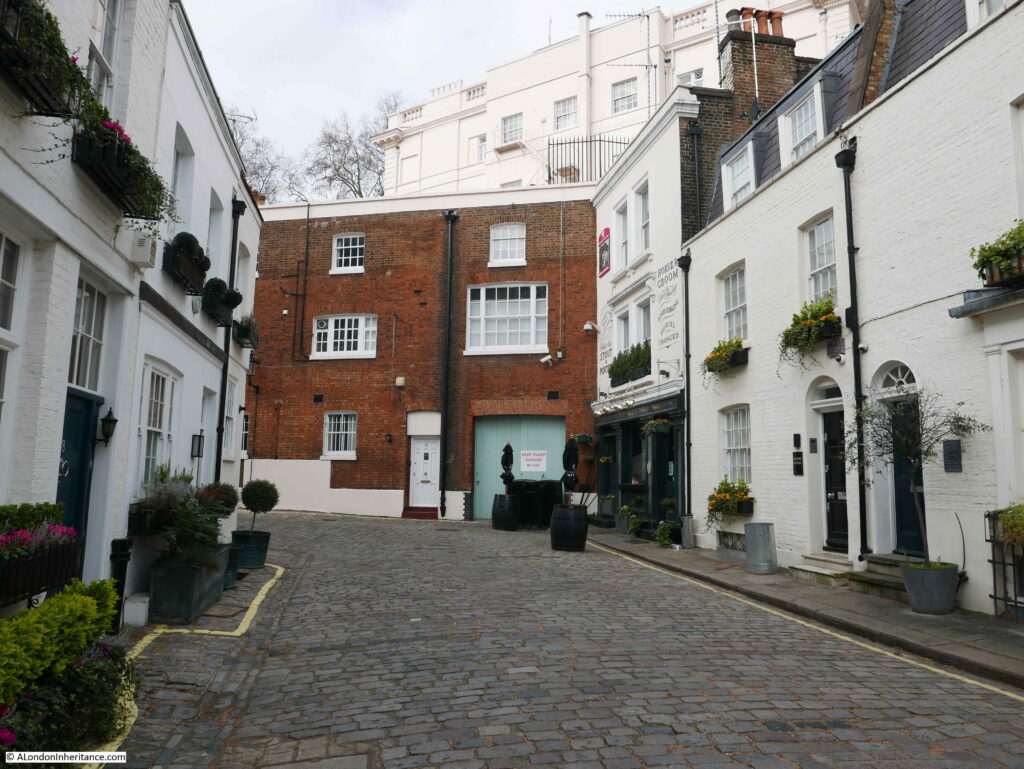This week, I am back to exploring pubs of the 1980s, and unlike the last post on the Narrow Boat in Ladbroke Grove, today’s pub is still open. This is the Star in Belgrave Mews West:
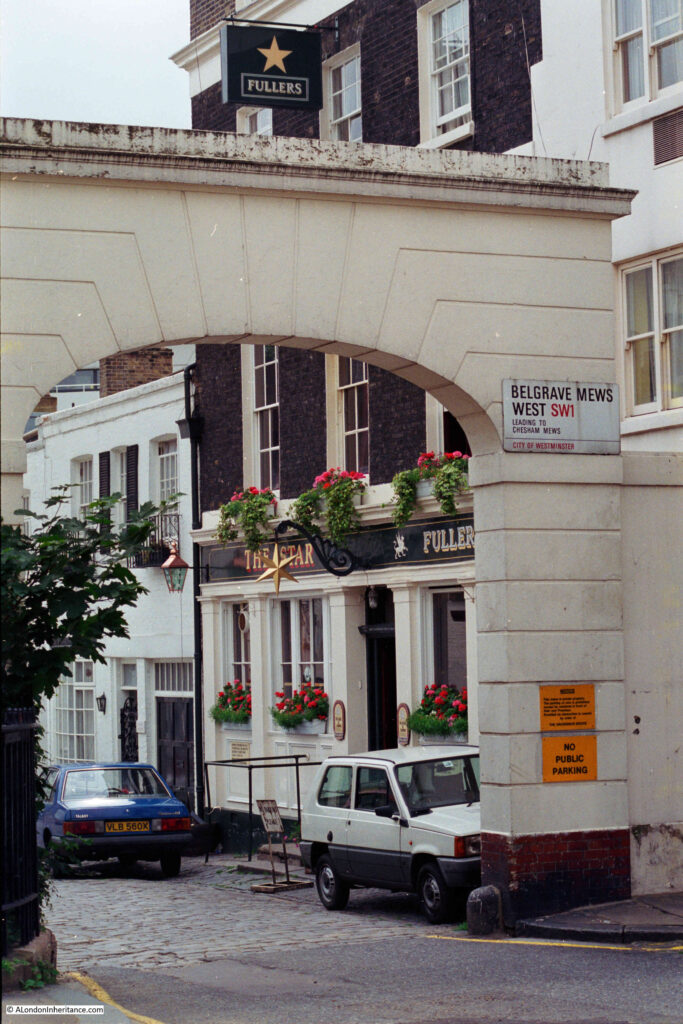
The same view today:
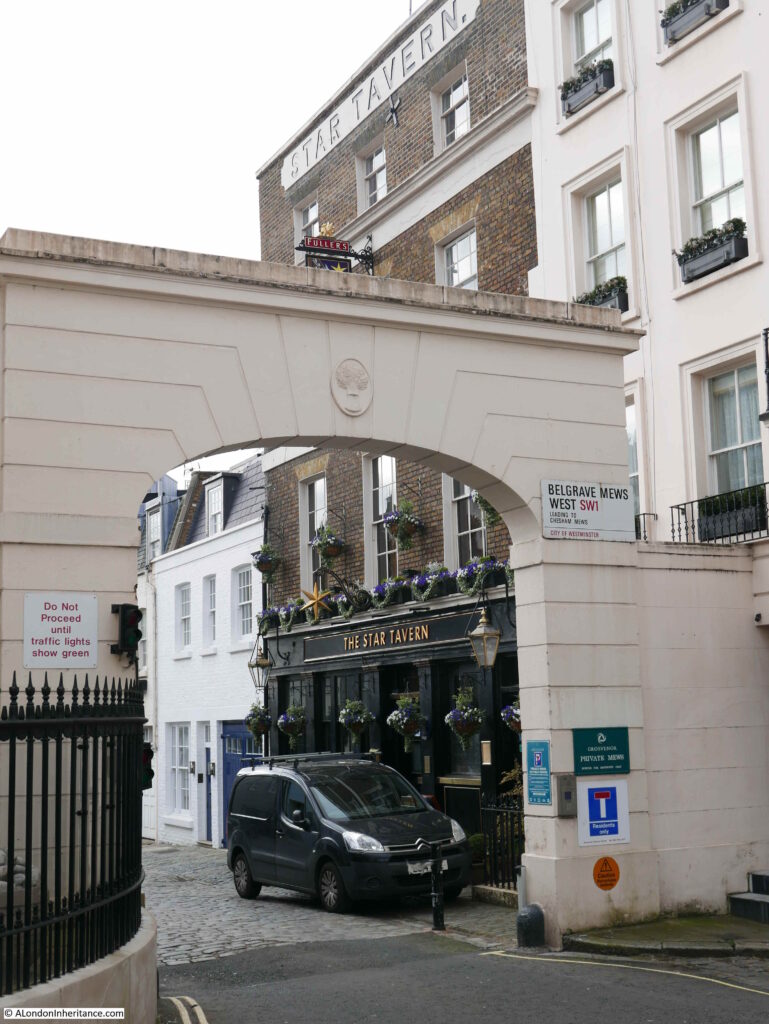
Apart from some minor cosmetic changes, and a change of colour for the ground floor of the pub, it has hardly changed in 35 years.
There is one minor difference which tells a wider story of how pubs have changed. Go back to the 1986 photo at the top of the post and look at the ground floor window to the left of the pub, and there is an Xpelair fan installed at the top of the window.
These were so common in pubs (there is one in the centre of the Horse and Groom Pub, Groom Place, Belgravia from a few weeks ago). They were needed as this was long before the smoking ban came into force in 2007, and pubs were mainly for drinking with a much smaller side line in food. I had a part time job in a pub in the early 1980s and I am sure I was on the equivalent of 20 day sometimes, just by breathing the air.
There is also a change at the top of the arch. In 1986 the top was plain, however in 2021 there is a wheatsheaf. The wheatsheaf is the symbol of the Grosvenor Estate, of which the mews are part.
The Star is located at the northern end of Belgrave Mews West, which runs between Chesham Place and Halkin Place, just to the west of Belgrave Square. I have highlighted the location of the mews in the following map (Map © OpenStreetMap contributors):
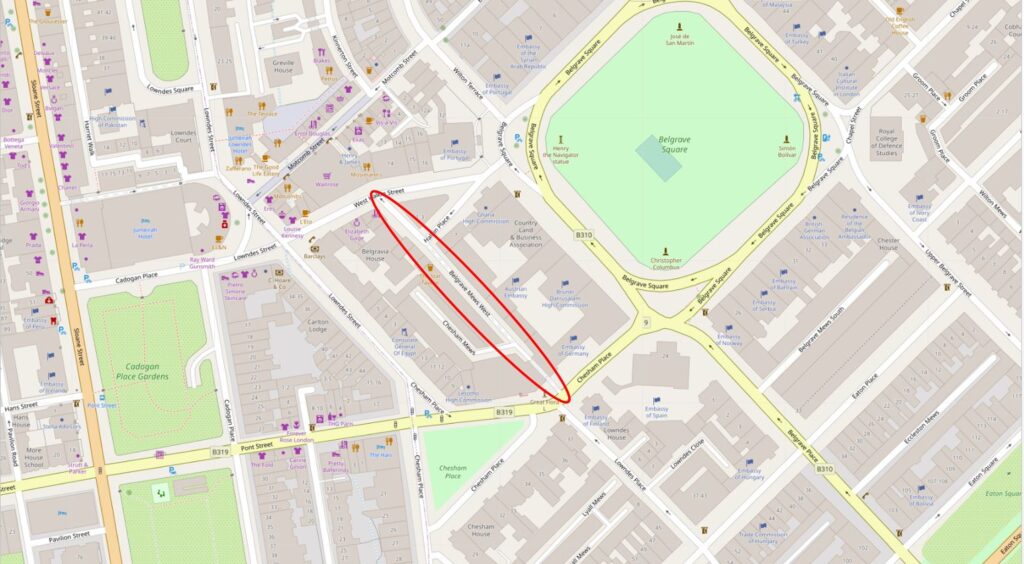
The Star was part of the westward expansion of Belgravia in the 1830s / 1840s, with the development of the Grosvenor Estate. The pub has retained its original name, and the first reference I can find to the pub implies that it opened in 1848, as from the Morning Advertiser on the 13th March 1848, in the column detailing the results of licence applications:
“Star, Belgrave-mews West, Belgrave-square – Mr Woolff appeared for Richard William Ledger, a beer-house-keeper, and applied for a licence on the grounds that there were a great many workmen and servants of the nobility and gentry in the neighbourhood, who required that accommodation which only a licensed house could afford, and that there was no public-house nearer than the Turk’s Head which is distant 400 yards from the petitioner’s. There was no objection – Licence granted”.
The Turk’s Head mentioned in the licence application is still a pub, but is now called the Alfred Tennyson, and can be found at 10 Motcombe Street, Belgravia.
The Star looks to be in a purpose built pub building, so I am not sure what came first, the building or the licence application? I assume the building was designed with the sole purpose of being a pub.
The licence application is also interesting as it clearly identifies the target clientele. You would probably not have found any of the wealthy owners of the large houses around Belgrave Square in the Star, however for their servants, and those working in the area, the Star must have been a welcome escape.
The following photo is looking south down Belgrave Mews West. Belgrave Square is to the left and the buildings on the left of the mews back onto the houses in Belgrave Square, which is probably where many of the pubs clientele worked.
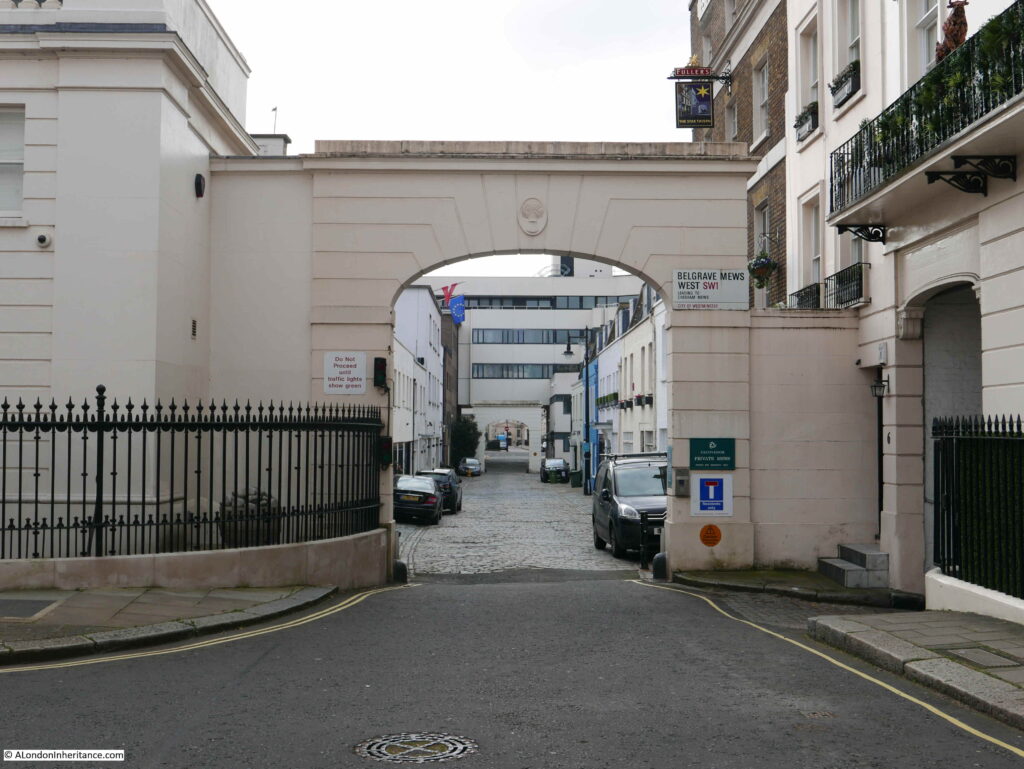
The Star – currently closed, but opening soon.
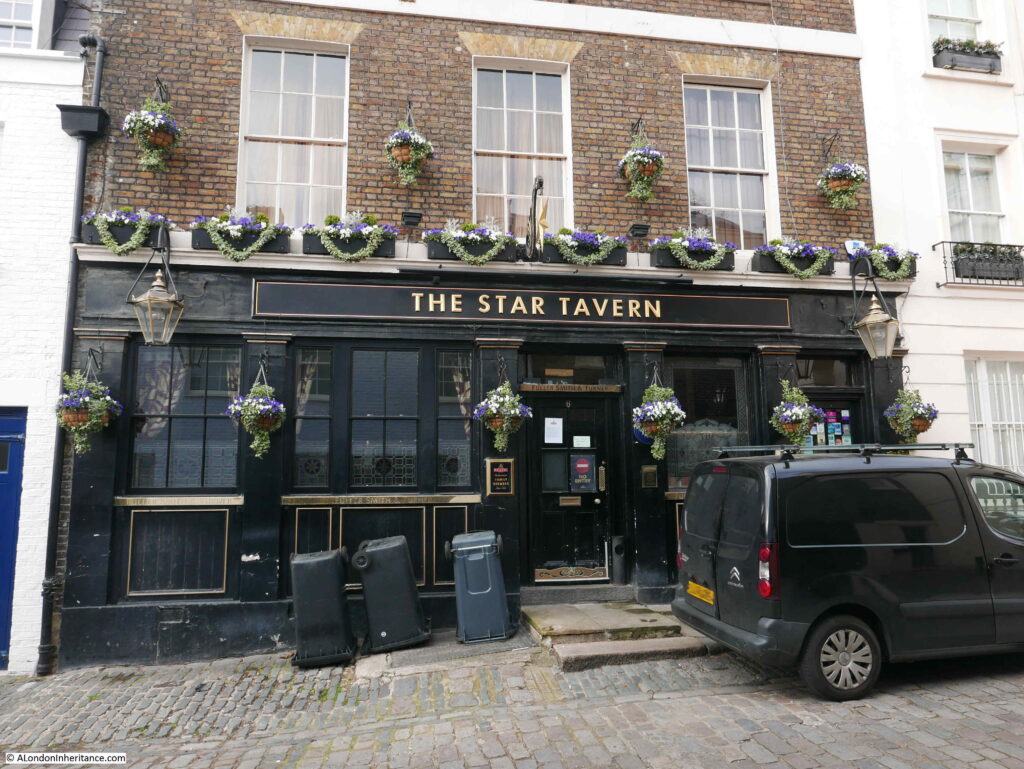
The Star seems to have been a place where the rich and famous, as well as many of the major criminals of the time met in the 1950s and 1960s.
It is the place where members of the gang who carried out the Great Train Robbery met to plan the raid.
A description of the pub in the Tatler on the 23rd July 1966 describes the rather colourful landlord at the time:
“The Star, 6 Belgrave Mews West. Pat Kennedy’s voice sounds like gravel-chips being steamrollered. It is heard at full blast any time of day or night, as he holds court in the upstairs bar. Paddy’s, as the pub is known, has seen it all. Name a personality, and he or she has been there. Nuff said”.
Those reported as frequenting the Star included actors Albert Finney, Diana Dors and Peter O’Toole, A couple of months after the above report, in a section on London’s best bars, the Tatler described the Star as “it attracts fanatical partisans of darts and pin-tables, and creates an illusion of spies and illicit rendezvous”.
The pub sign features a view of the pub to the side, looking through the arched entrance to the mews, where a coach and horses are waiting.
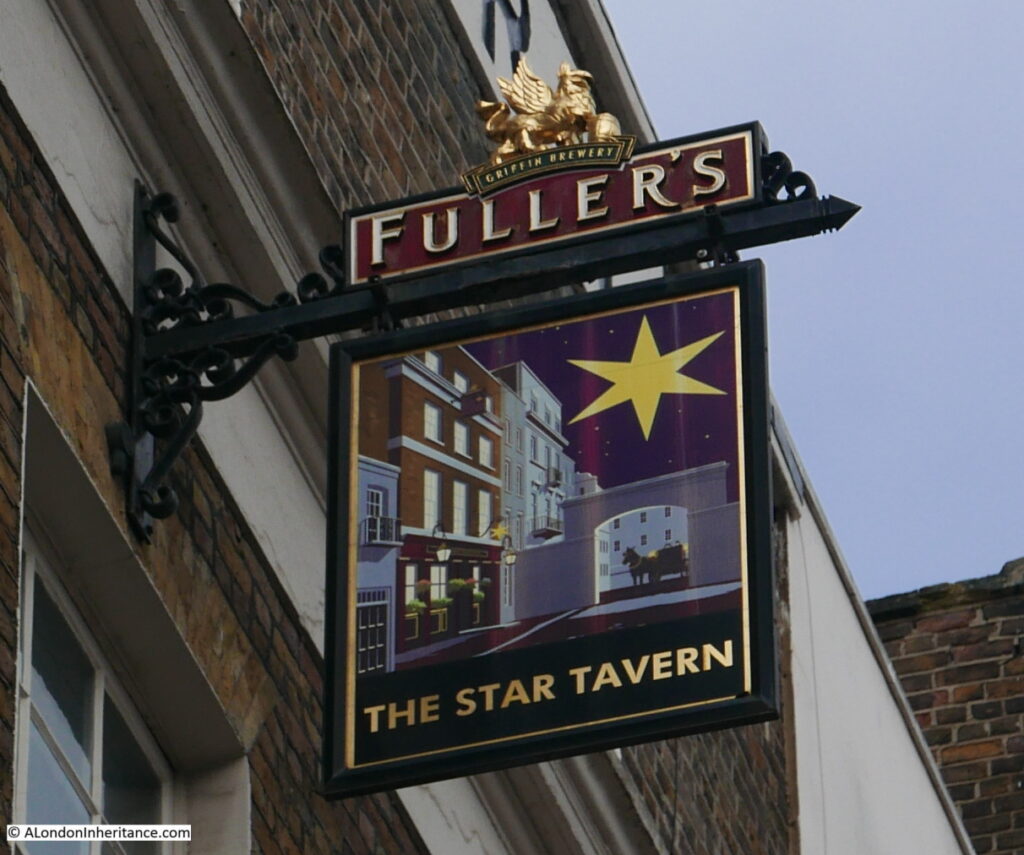
Looking through the arch with the Star to the left:
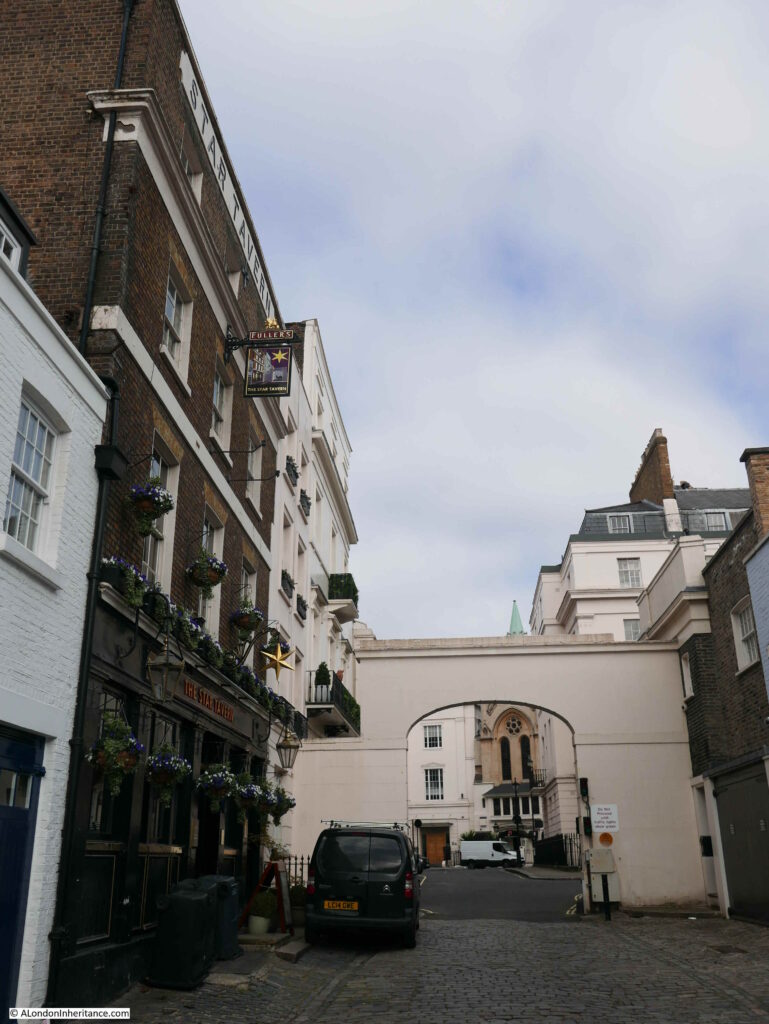
Walking further down the mews and this is the view looking up, with the pub at the far left:
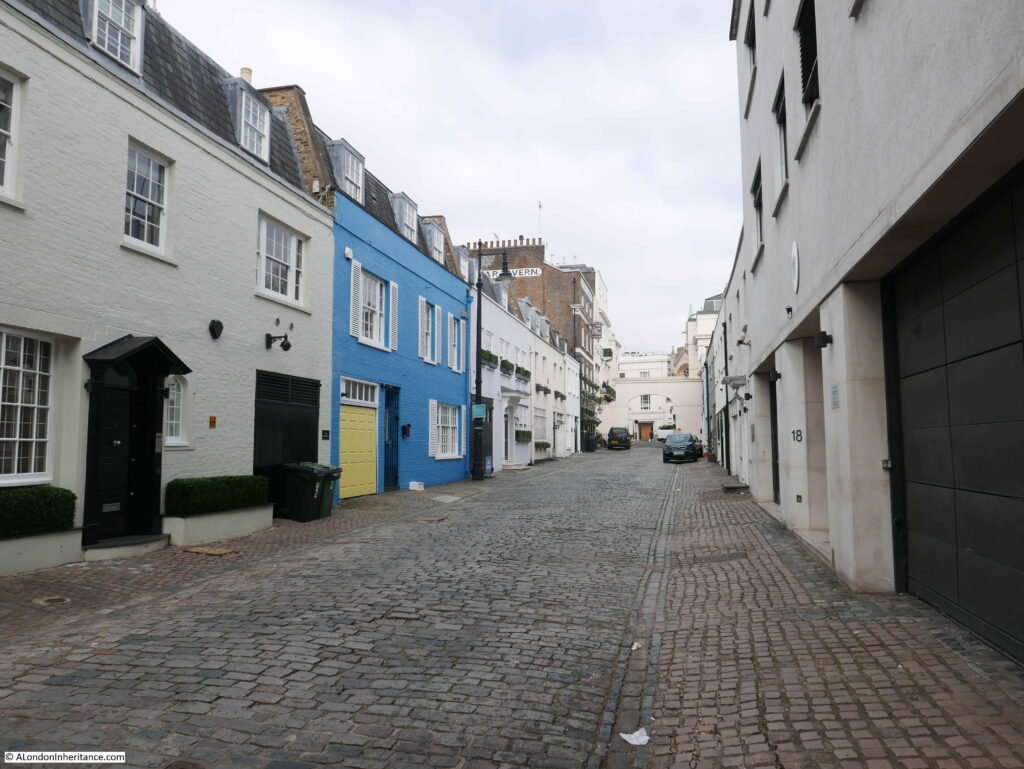
The majority of the buildings that line Belgrave Mews West are the type of buildings you would expect to find in such as place. Two storey buildings, many with large entrances on the ground floor which would have once been the stables for the large houses in Belgrave Square. The rear of these buildings face onto a small open space between them and the larger houses on Belgrave Square, allowing easy access when a servant needed to get the horse and carriage round to the front door in Belgrave Square.
The difference with Belgrave Mews West is that towards the southern end of the mews there are two embassy buildings.
The Austrian Embassy has a very impressive frontage onto Belgrave Square, however to the southern end of the mews, on the left, we can see the Austrian flag above the very plain rear of the embassy.
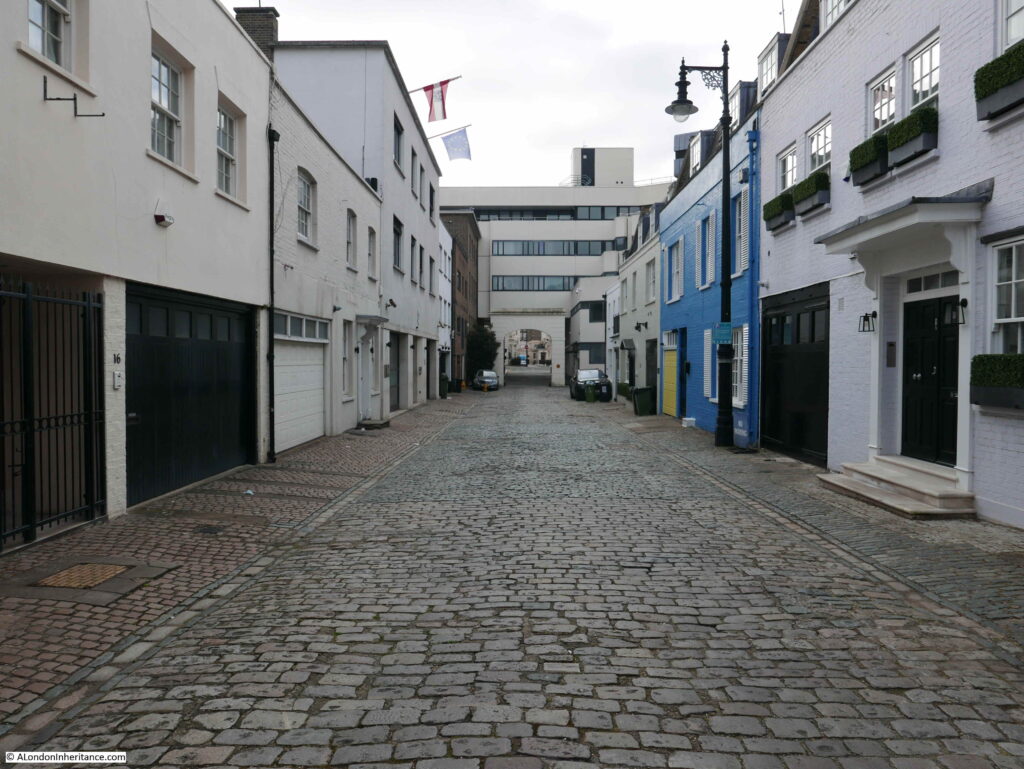
At the far end of the mews, between the arch that mirrors the arch by the Star is the German Embassy which occupies a large area of land between Belgrave Mews West and Chesham Place.
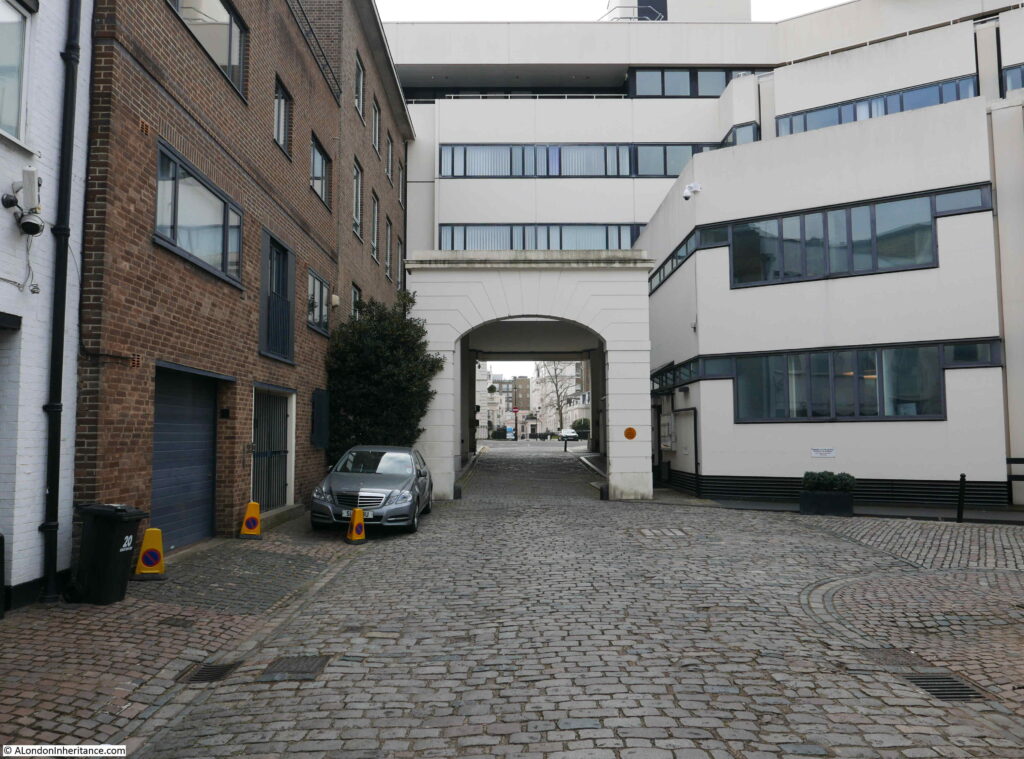
View through the southern arch of Belgrave Mews West:
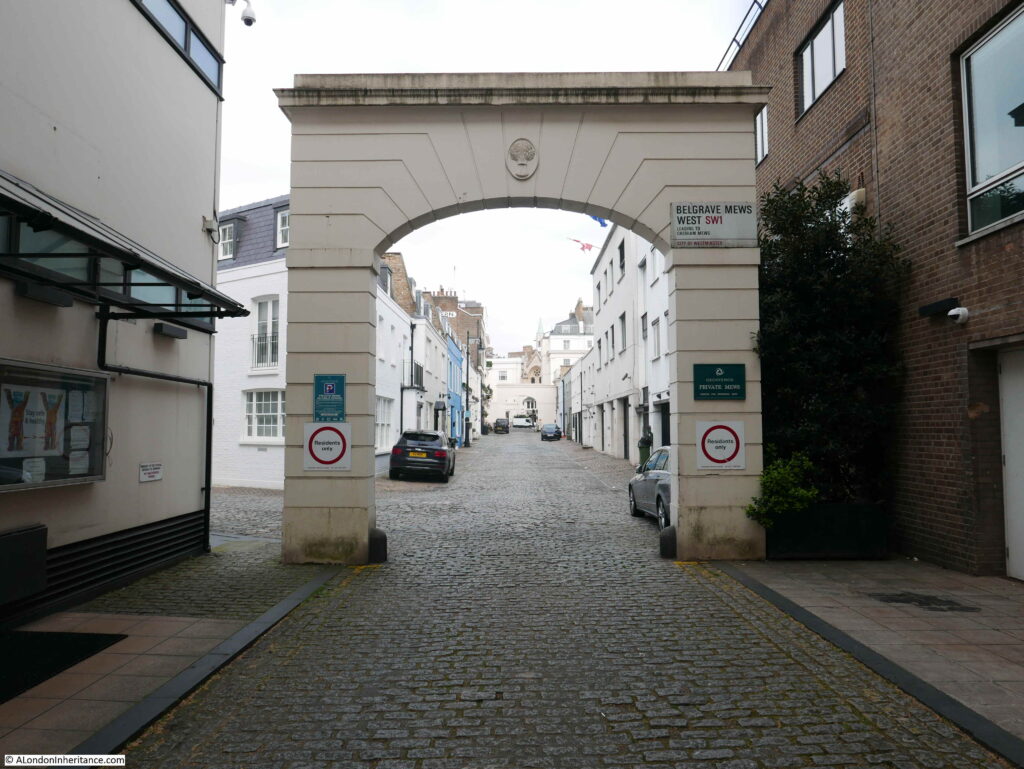
The LCC Bomb Damage Maps show that the buildings in the space occupied by the Austrian Embassy in Belgrave Mews West suffered severe damage, and the houses that were along Chesham Place and the mews were damaged beyond repair, so bomb damage probably explains why the original early 19th century buildings have been replaced by more the more recent embassy buildings.
The following photo shows the entrance to Belgrave Mews West from Chesham Place, which passes underneath the German Embassy. I was surprised that it was so easy to walk around the embassy and take photos, however there were plenty of CCTV cameras around.
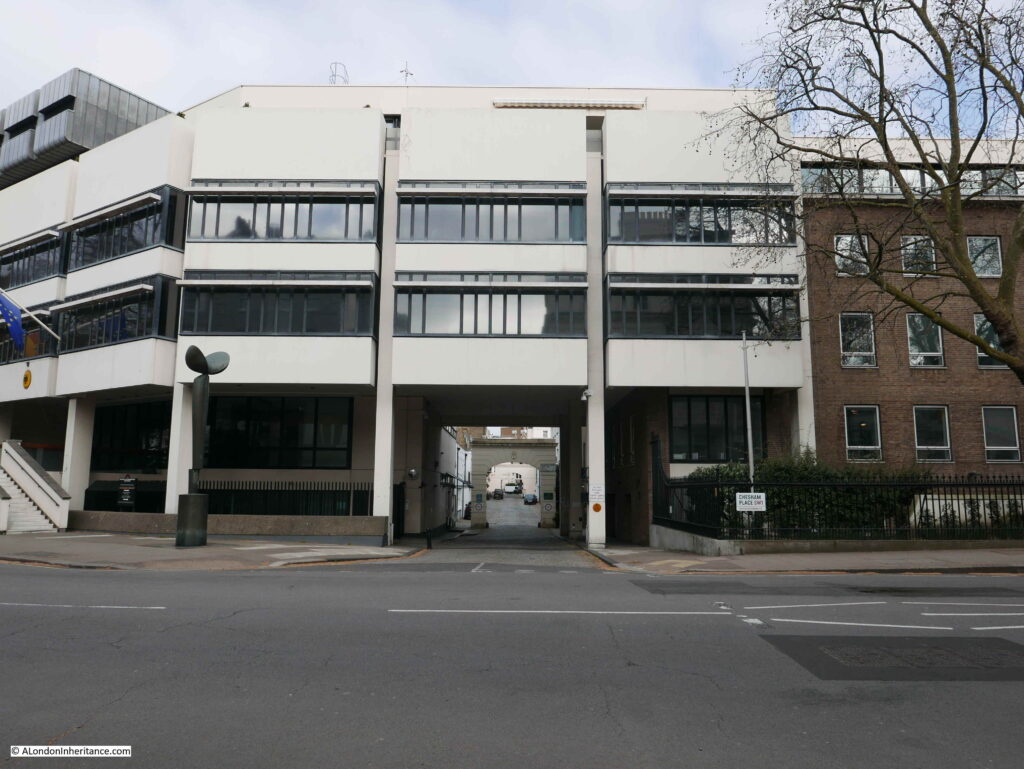
Belgravia has been a preferred location for embassies since the area was first built. In “Knightsbridge and Belgravia” E. Beresford Chancellor (1909) writes about Chesham Place, including that the “Russian Embassy has been located here since 1852”.
The Star is one of those wonderful pubs that make wandering the side streets so very enjoyable, even more so when the pub reopens on the 17th May. Brilliant to see that the Star is still to be found, and another pub added to the list to revisit when open.

